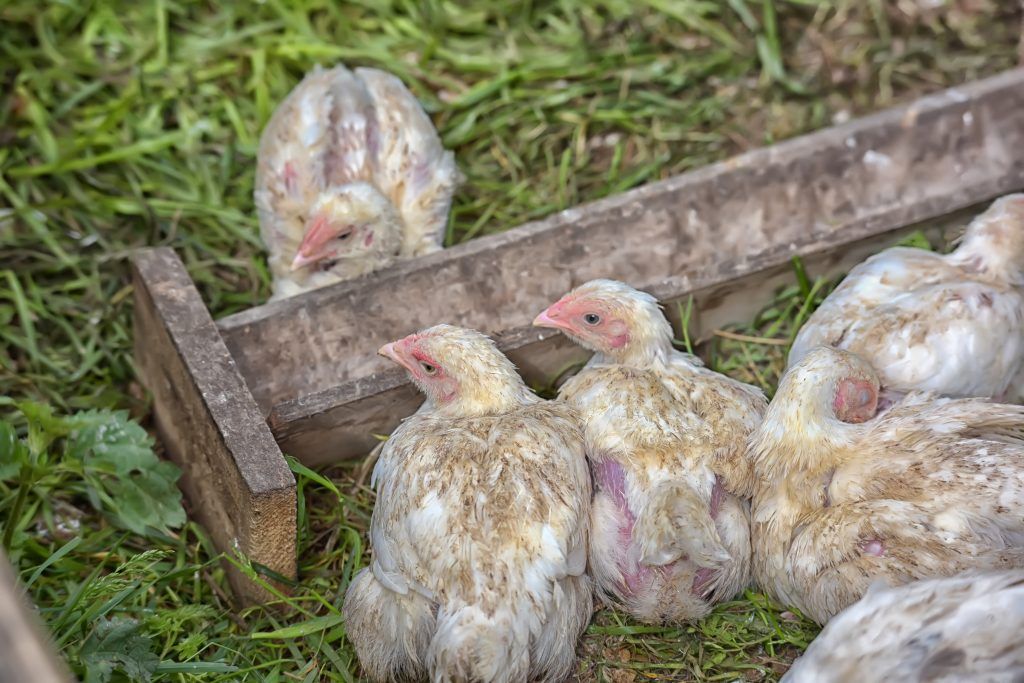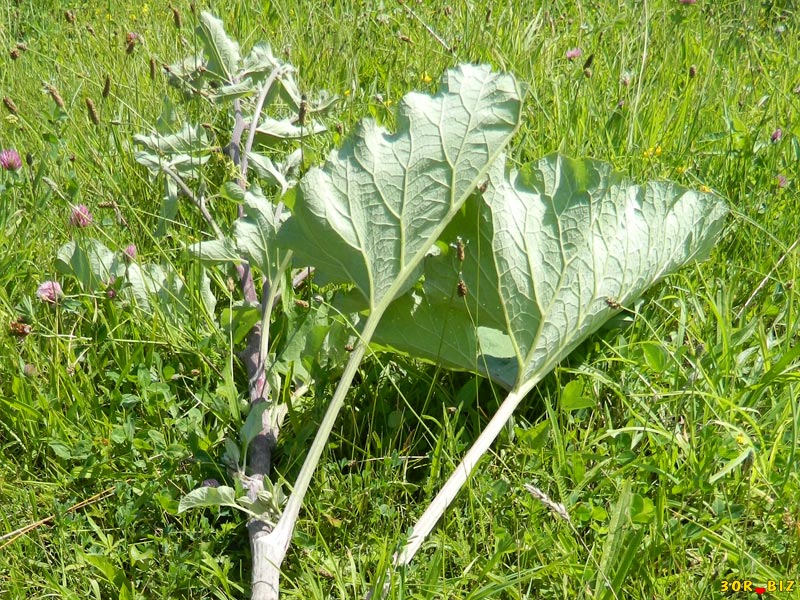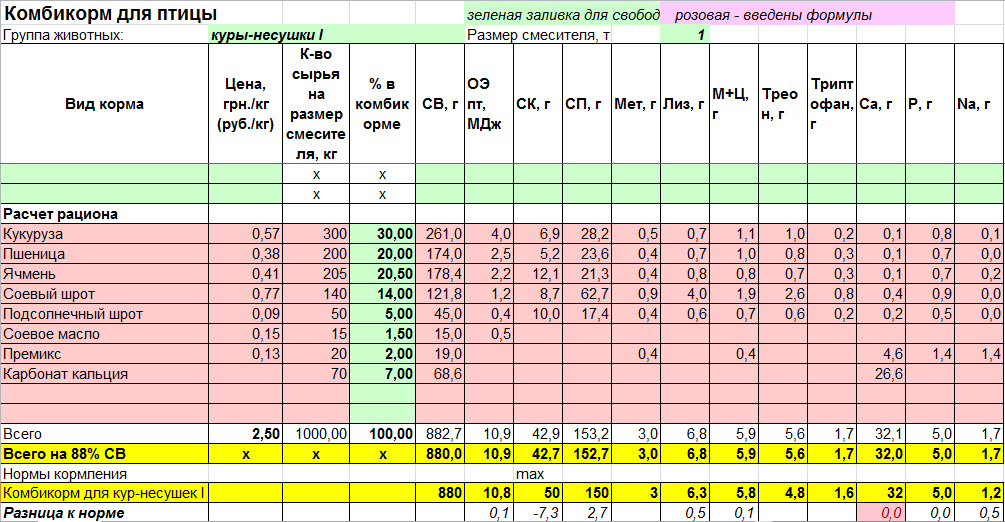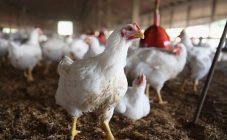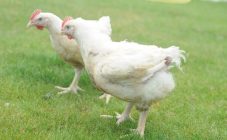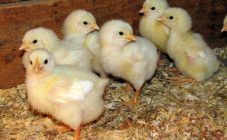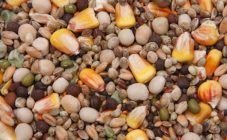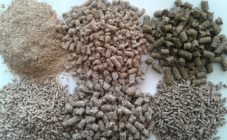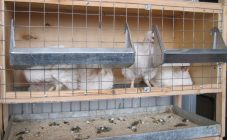Content:
Many business executives are engaged in the common variant of raising chickens for meat and use broilers for this purpose. The reason for this is that broilers have the ability to gain weight in a short period of time, are characterized by a calm demeanor during growing, and their meat is of excellent and demanded quality. The most common broiler breeds are Cobb 500 and ROSS 308.
However, along with all the positive qualities of this common breed, the breeder may encounter some nuances in keeping the bird, most importantly, when feeding. This requires knowledge and daily attention. The article proposes to consider all the nutritional features of the breed in order to obtain a quality product that will come out as such only with proper and timely feeding of this bird.
How to feed properly
How to feed broilers? In order for the bird to gain the necessary weight better and faster, its nutrition must certainly be balanced. It is worth taking care of the good taste of the meat produced. All this will be impossible to achieve if broilers are not healthy, it is necessary to build on this parameter, first of all, that is, the bird should feel good.
There are several options for successful cultivation. How to feed broilers properly?
The first method is to use only dry feed. It is argued that feeding this way is very beneficial and easy in terms of caring for broilers, especially on large farms. Making feed based on water, although it may be cheaper given the increased weight, requires more time and physical effort.
In addition, some farmers are of the opinion that wet feed may be unsafe for poultry, this is due to the acquisition of components for the feed of inadequate quality. Food purchased and used dry is most often balanced for the bird's nutrition and is focused on its fastest growth. When feeding wet, as is believed by the same breeders, a significant delay in the development of the bird can occur, sometimes this period is about 2 weeks.
Yet, despite such claims, some poultry farmers have resorted to feeding broilers with wet mash. The usual scheme for preparing such a feed looks like this:
- Dry food is taken in the amount of 1 kg;
- Filled with half a liter of water. Can be made with milk or broth;
- All this is thoroughly mixed.
This option is also recognized as one of the more economical because it becomes possible to use all the leftovers from the kitchen in poultry feed. This can be peeling potatoes and other vegetables, yeast and cereals. Such feeding of broilers is advisable if you have not too large a farm, up to about 100 individuals, and have an average amount of money.
The third option that can be used is the combined method. It is subdivided into several types. You can do so that in the bird feeder there is always a dry feed, wet mash is also used as an additional complementary food. It happens that dry food is poured directly into the mash.
Nowadays, protein-based BMVD concentrates are used. They contain minerals, vitamins necessary for poultry and other active ingredients for the proper development and speedy growth of broilers.
These concentrates are added to dry feed by poultry farmers in an amount up to 30% of the total feed weight. The financial costs of feeding poultry are reduced several times, the necessary substances for poultry, on the contrary, increase. In addition, with such feeding, broilers are less likely to suffer from diseases, their meat becomes better. The savings for this option is about 20%.
Daily broilers
Feeding broilers at home requires increased attention from day one. Broilers, only one day old, are fed up to 8 times every day, up to one week of age. From the beginning of the next week, they feed them a little less often, 5-6 times a day. For one feeding, day-old broilers should receive about 15 g of feed.
Chicks whose age is a day should be given dairy products, such as reverse, cottage cheese, kefir. Also, a moist mash is very useful for them, the basis of which should be millet, with the addition of the same dairy products. Newly born and growing chicks are given millet as the most important ingredient in any feed. If problems arise with the gastrointestinal tract, they resort to partial use of dry compound feed.
How to feed daily broilers:
- Barley, wheat, corn;
- Bone meal, chalk, cake;
- Fodder yeast.
At the age of five days, chickens can be given food purchased in the store, or cook them mash, always wet. It is preferable to use grain after 10 days of life of babies. It must be necessarily small and steamed.
A very important point in rearing is to provide the chicks with as much water as they need, the water should be cool and clean. In order to prevent the possible development of diseases, a solution of manganese is used in a weak concentration. Such a solution is given no more than once every three days, it helps very well to avoid gastrointestinal diseases in chicks.
DIY feed
Sometimes purchased compound feed can cause some doubts among poultry farmers about naturalness. Many people prefer to make their own broiler feed. In the implementation of the plan, it is worth remembering the age of the bird, since the feed for them is different. How many and what components are added to the feed?
DIY broiler feed, composition up to 2 weeks:
- Half is corn;
- Wheat needs 16%;
- Kefir, necessarily low-fat - 12%;
- Meal, which can be replaced with cake - 14%;
- Barley is taken 8%.
How to feed two week old broilers:
- Corn is taken 48%;
- The same cake or meal needs 19%;
- Wheat needs 13%;
- The share of fish or meat and bone meal is 7%;
- Feed yeast - 5%;
- Dry recycling - 3%;
- Herbs - 3%;
- Fodder fat - 1%.
How to feed broilers at 3 weeks? The feed composition at 2 weeks is also suitable for 3 week old broilers, from the age of one month, the mixture is prepared like this:
- Take corn flour 45%;
- Meal or cake - 17%;
- Bone meal - 17%;
- Wheat needs 13%;
- Mela - 1%;
- Feed yeast - 5%;
- Fodder fats about - 3%.
What can you give
Can broilers be given sand? The vast majority of poultry farmers provide broilers with sand as a mineral supplement when they are several days old. But this should not be done, the chick may have intestinal obstruction.
It is better to use shells instead, which, on the contrary, help cleanse the digestive system. They are given crushed and every day. Ash should be in the feed in a small amount, about 3% of the total food mass.
Peas are not used as a separate, independent feed; rather, they are a necessary addition to the general diet. Peas are used when the chickens have reached the age of 10 days.
Soy is very similar in composition to animal protein, it is used for feeding after a month of broilers' life. It makes up one fifth of the total feed.
Bread is also given at the age of one month, and can be used alone or as part of another feed. It is useful for good weight gain.
Broilers like whey very much, it is used for feeding on its own or added to the mixture. For prevention, chickens are given green onions, so you can avoid diseases of the digestive system. Cottage cheese is used when feeding only born broilers.
Broilers also need products:
- A fish;
- Boiled buckwheat;
- Zucchini;
- Bran, which makes up 10% of the feed;
- Powdered milk from 10 days;
- Millet from birth.
Cabbage should be introduced into the diet from the 5th or 6th day of chickens' life. These are vitamins and fiber. Nettle is added to the feed even earlier, from the 3rd day.
The mineral-rich water duckweed accelerates bird growth. It is given both fresh and dried. Sorrel is also necessary and useful. Wormwood in the diet of a bird is undesirable.
You can give growing broilers burdock leaves and quinoa. As for celandine, some poultry farmers say that with its use they get more eggs, others that the plant should not be used because of its toxicity.
Hercules is added to food from 1 month, but not more than 10%. Crackers are given quite a bit: one crouton per 100 g of feed.
Chalk is added to basic feeds as a source of calcium, preferably in the afternoon to improve egg shell formation. Eggshells are also used in crushed form. Charcoal is also essential for health.
With rice, you should be careful so that the bird does not have paralysis, it is needed in limited quantities. They do the same with salt, there should be plenty of it, but not too much. Many owners mix feed on lard.
The additive BVMK is mixed with feed. It contains all the necessary substances and elements. But it should be no more than a quarter of the total weight of the feed.
Protein for broilers
There are some high protein foods that are very beneficial for broilers:
- Boiled eggs;
- Chicken, lamb, beef;
- A fish;
- The insides and meat of shellfish;
- Flour worms;
- Oats and nuts.
How to feed broilers
On the first day, many poultry farmers give broiler chickens warm, slightly sweetened water. Then they need to ensure the purity of the water, you can give it not boiled, sometimes they add a little potassium permanganate for prevention.
Broilers in 45 days
Raising broilers for slaughter meat will take much longer than egg breeds. Feeding broilers in a month and a half is quite simple, you need to follow the instructions given above, and be guided by a special table that will show the amount of feed in each period of bird growth.
Table of dependence of bird age, live weight and daily feed requirement
| Bird age | Live weight, g. | Gram of feed per day |
|---|---|---|
| Week 1 | 165 | 30 |
| 2 week | 427 | 65 |
| 3 week | 846 | 100 |
| 4 week | 1350 | 140 |
| 5 week | 1925 | 170 |
| 6 week | 2525 | 190 |
| 7 week | 3100 | 200 |
Poultry tips
Some poultry farmers advise buying small chicks in veterinary pharmacies and immediately feed for them and supplements. After 2 weeks, the compound feed is switched to normal feeding. They rightly argue that there should not be the slightest draft in the poultry room. Broilers are a very thermophilic bird.
Other owners prefer to raise broilers from 50 days to 5 months to achieve a weight of about 4 kg or more. They advise using all garden waste. Another part of the breeders purchases grown poultry in order to avoid losses and culling.
Whatever method the poultry farmer chooses for himself, the main thing is to follow all the rules for growing broilers, both in keeping and in feeding. In this case, the owner has the right to count on tasty and healthy meat on his table.
